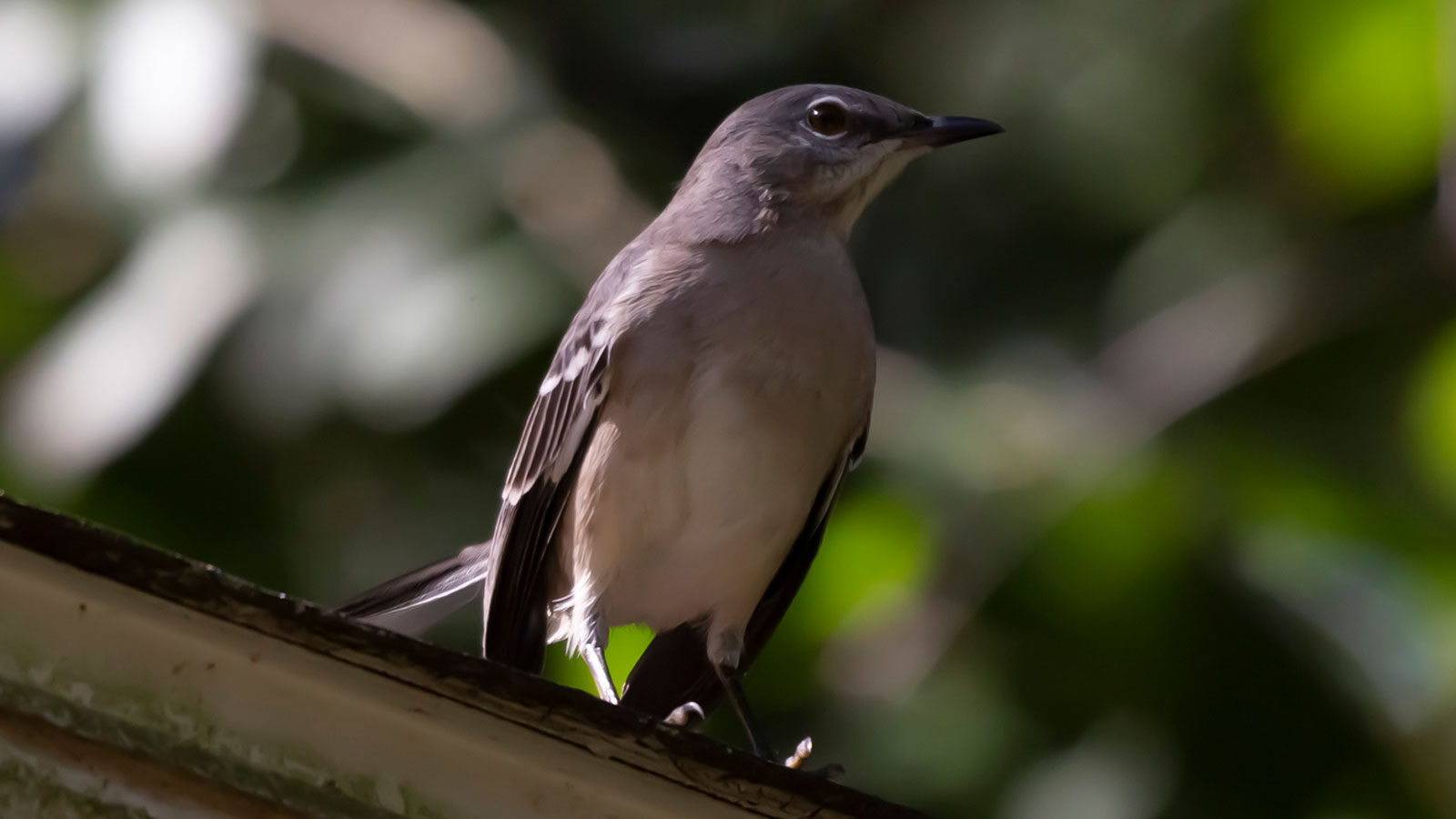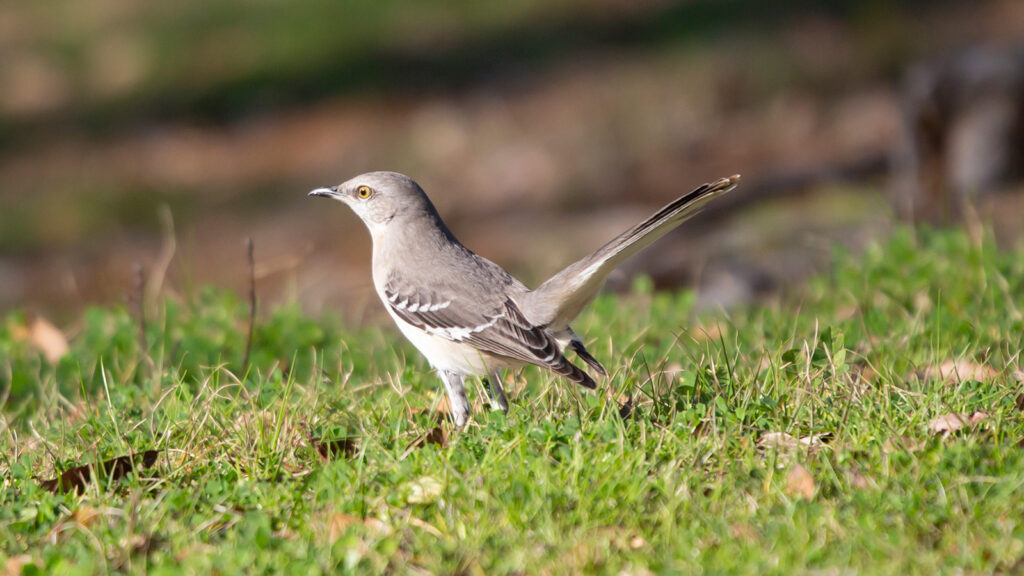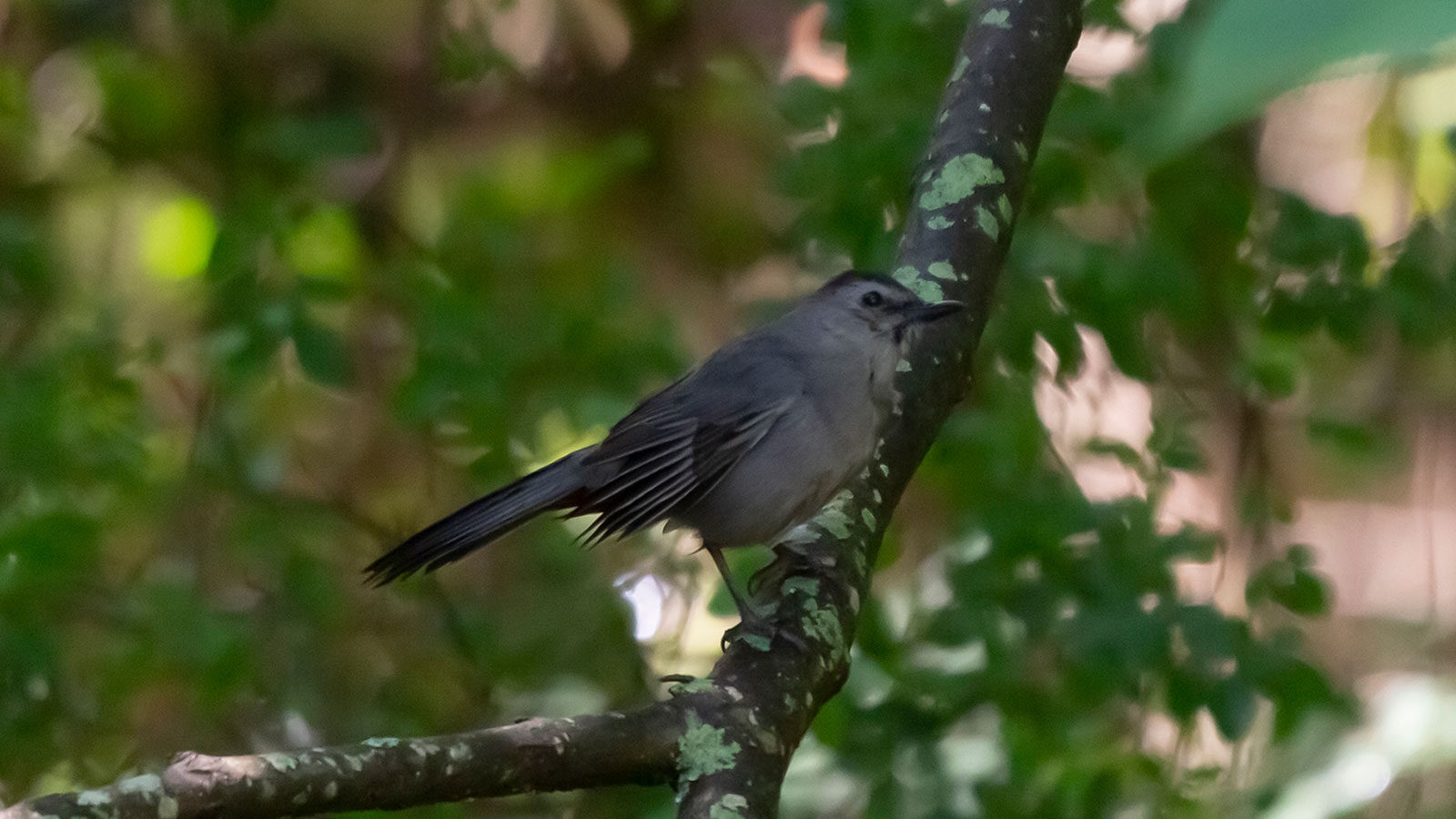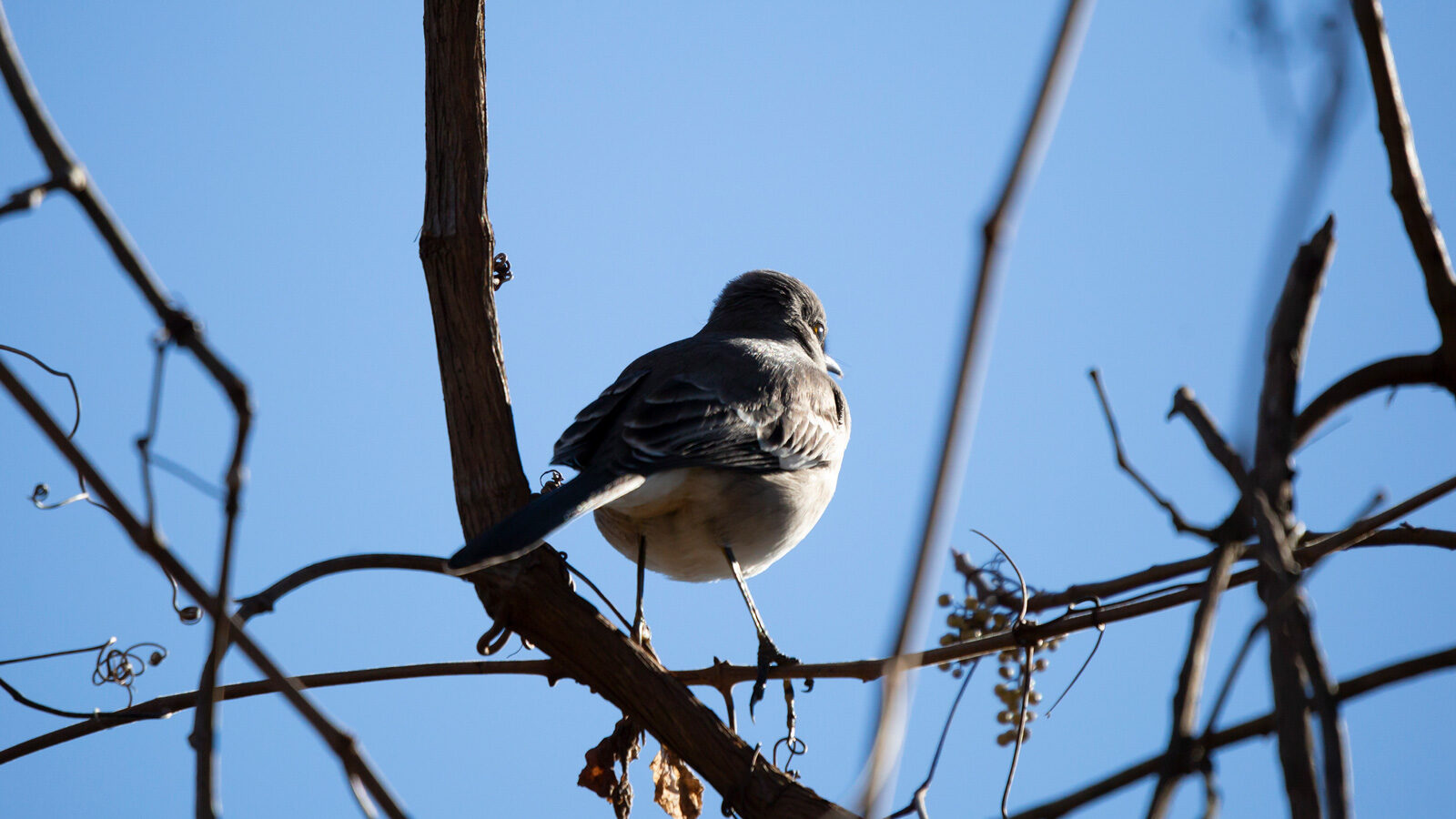
Did you know that northern mockingbirds can sing over 200 songs?
Northern Mockingbirds
at
a Glance

Key Features:
Northern mockingbirds are gray birds with white bars on their wings, white throats, white bellies, and gray breasts.
Least Concern - Population Stable
Habitat:
Forest edges, parks, and suburbs
nesting habits:
Northern mockingbirds build cup-shaped nests in shrubbery and trees out of grass, leaves, rootlets, trash, and twigs.
seasons northern mockingbirds are active in our area:
All year
Diet:
Insects and fruit
hunting Behavior:
Northern mockingbirds forage on the ground.
Commonly Confused With:
Gray Catbirds

Northern mockingbirds are often confused with gray catbirds because both are gray birds.

Northern mockingbirds have white throats and bellies.